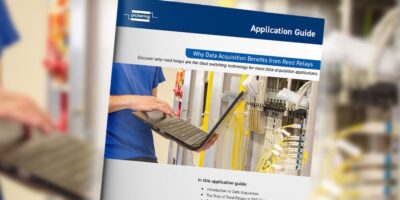Pickering has released a switching application guide for T&M engineers
Pickering Electronics has released the latest in its series of educational application guides for engineers building test & measurement (T&M) systems, titled: How Data Acquisition Benefits from Reed Relays. This subject matter expert-authored comprehensive application guide explains why reed relays are the ideal switching technology for most data acquisition (DAQ) applications.
In DAQ applications, measurements need to be taken from a diverse range of transducer and sensor types – including temperature, pressure, movement, sound and proximity. Many produce an electrical signal in response to a condition; for example, a photovoltaic (PV) cell reacting to light or a Hall effect sensor reacting to the presence of a magnetic field. In other cases, a fundamental property or characteristic of the sensor changes relative to its environment, as is the case with a resistance temperature detector (RTD) or a dielectric sensor used to measure moisture content.
The outputs or properties of the transducers are then conditioned into signals for feeding into data logging instrumentation (data loggers), or to act as inputs into closed loop control circuitry. In many cases, multiple sensors or transducers are employed; for example, several RTDs might be used to measure temperature in different locations. However, it is usually impractical to have a signal conditioning circuit for each sensor. Instead, it is more efficient to poll the sensors. Moreover, common signal conditioning circuitry can be used with different sensor types – and the circuitry’s gain and filtering can be controlled to make best use of the sensors’ range.
Reed relays are ideal for connecting signal conditioning circuitry to sensors for a variety of reasons, particularly where accuracy is concerned, including:
• Low thermal EMF (electromotive force)
• Low leakage currents and capacitance
• Hermetically sealed contacts, protecting from environmental contaminants and ensuring reliable performance up to 1 billion operations.




